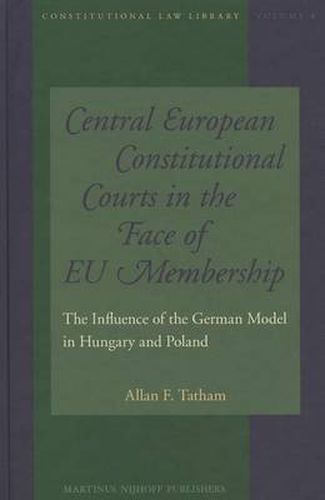Readings Newsletter
Become a Readings Member to make your shopping experience even easier.
Sign in or sign up for free!
You’re not far away from qualifying for FREE standard shipping within Australia
You’ve qualified for FREE standard shipping within Australia
The cart is loading…






Central European Constitutional Courts in the Face of EU Membership explores the enduring German legal influence on other systems of constitutional justice, concentrating on the impact of the Federal Constitutional Court’s approach to EU integration on its counterparts in Hungary and Poland.
Such a model aims to protect Germany’s constitutional identity or essential core of sovereignty, the contents of which are not susceptible to transfer or limitation, in the face of the requirements of the Union’s constitutional legal order.
The influence of this model on the two Central European courts has encouraged them to take an active part in negotiating the new multilayered judicial construct of Europe. Tatham thus firmly places the Hungarian and Polish constitutional courts within the overall context of the continuing dialogue between national courts and the Court of Justice in the evolution of the European constitutional space.
$9.00 standard shipping within Australia
FREE standard shipping within Australia for orders over $100.00
Express & International shipping calculated at checkout
Central European Constitutional Courts in the Face of EU Membership explores the enduring German legal influence on other systems of constitutional justice, concentrating on the impact of the Federal Constitutional Court’s approach to EU integration on its counterparts in Hungary and Poland.
Such a model aims to protect Germany’s constitutional identity or essential core of sovereignty, the contents of which are not susceptible to transfer or limitation, in the face of the requirements of the Union’s constitutional legal order.
The influence of this model on the two Central European courts has encouraged them to take an active part in negotiating the new multilayered judicial construct of Europe. Tatham thus firmly places the Hungarian and Polish constitutional courts within the overall context of the continuing dialogue between national courts and the Court of Justice in the evolution of the European constitutional space.